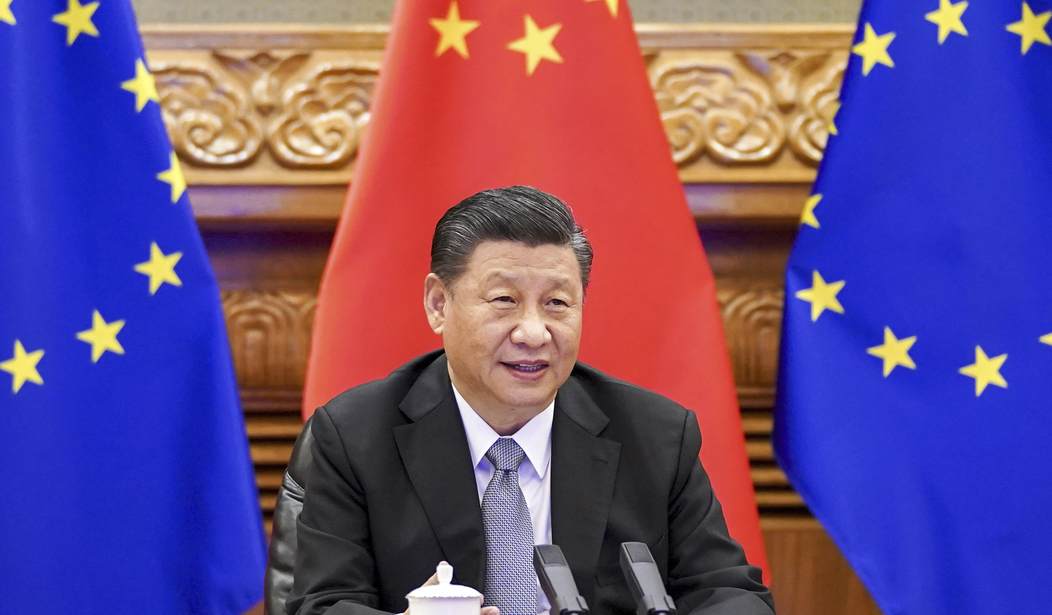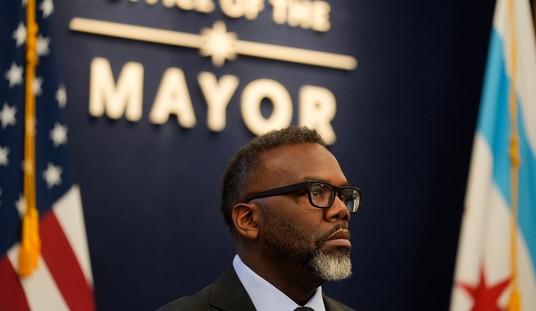Last week, Australia and China traded angry diplomatic barbs after foreign minister Marise Payne abruptly pulled out of four “Belt and Road” projects. That might have proven prescient, as a new report accuses Beijing of employing slave labor to build its infrastructure projects aimed to project economic and diplomatic power in the Eastern Hemisphere. The Washington Post does a deep dive on China’s slavery practices on these projects and describes a nightmare:
China’s Belt and Road initiative, which aims to connect Asia, Africa, the Middle East and Europe through Chinese-funded ports, bridges, 5G networks and other infrastructure, is built on the backs of people like Ding, who researchers say face exploitation that is exacerbated by the pandemic.
Interviews with labor rights advocates and a dozen Chinese workers employed by state-owned companies and subcontractors reflect a pattern of abuse that threatens to undermine China’s ambitious bid for diplomatic and economic influence, a mission closely tied to the legacy of leader Xi Jinping. Many spoke on the condition of full or partial anonymity, fearing retribution.
New York-based China Labor Watch argues in a new report that overseas Chinese workers are victims of human trafficking and forced labor. Workers described being held against their will, forced to work while infected with the coronavirus and deceived into working illegally. Their passports were seized, they said, and most had gone months without pay. Some said they were beaten for protesting conditions or forced into “thought training.”
To be clear, Australia had other reasons in mind when Payne canceled these programs. It came as part of an escalating series of moves on both sides, which have accelerated since the beginning of the pandemic:
Payne said she had decided to cancel four deals, including two that Victoria agreed with China, in 2018 and 2019, on cooperation with the Belt and Road Initiative, Chinese President Xi Jinping’s signature trade and infrastructure scheme.
“I consider these four arrangements to be inconsistent with Australia’s foreign policy or adverse to our foreign relations,” she said in a statement. …
Bilateral ties were strained in 2018 when Australia became the first country to publicly ban Chinese tech giant Huawei from its 5G network. Relations worsened last year when Canberra called for an independent probe into the origins of the coronavirus outbreak.
Australia’s latest move “is bound to bring further damage to bilateral relations, and will only end up hurting itself,” the Chinese embassy said.
Australia’s federal parliament granted the veto power over foreign deals by states in December amid the deepening diplomatic spat with China, which has imposed a series of trade sanctions on Australian exports ranging from wine to coal.
One has to wonder whether the worker exploitation had something to do with this decision, though, even if China didn’t employ any workers in Australia. Surely, other governments had to know or suspect that China was abusing its workers. The Belt and Road Initiative (BRI) is a major part of China’s attempt to expand its power and influence, as is its efforts to involve itself in Western 5G networks. Intelligence agencies that missed this obvious aspect of China’s attempts to keep costs low would be guilty of neglect bordering on malfeasance.
That’s not the only aspect of exploitation and bullying China employs in BRI. A week ago, Forbes’ Milton Erzati called China’s BRI manipulations a reconceiving of the British Empire, as written by The Godfather author Mario Puzo:
The scheme sounds wonderfully open and global, but its darker aspects emerge from the details of how the Belt & Road has worked to date and will continue to work. China identifies a need, say a road in Pakistan or a port in Malaysia or in Africa. Beijing approaches the leadership of the target country with a proposal. It will lend that country the funds for the project as well as the expertise to complete it. If, as happened with Malaysia, the government in the target country decides that the Chinese loan is too great an obligation and accordingly rejects the deal, Beijing, in a manner analogous to our friends in Brooklyn, then brings trade and political leverage to bear, sometimes even military demonstrations, in order to get that government to change its mind.
If and when that government agrees, Beijing moves to a different form of coercion. The loan comes equipped with covenants: Chinese state-owned firms will do the work, often with Chinese labor, and when the facility is complete, other Chinese firms will manage and maintain it. Loan documents may also include a paragraph or two about a Chinese military presence, say with a naval base within a port facility, such China arranged with the Republic of Djibouti on Horn of Africa. Since all is done with Chinese firms and management, the target country is hardly likely to earn enough from the project to repay the loan, at which time, according to most Belt & Road arrangements, China takes outright ownership. Effectively, the target country incurs a financial obligation for an expansion of Chinese economic and political power into its territory. At least when the British Empire did this sort of thing, it incurred the financial obligation itself, not the soon-to-be-conquered principality.
One can see why slave labor would be an important part of this plan. It keeps costs down and allows China to put its capital to better uses, ie, the long-range extortion described by Erzati. Even China doesn’t have unlimited capital and revenue, after all, and the costs of parking military and security personnel in these outposts isn’t inconsiderable either.
Small wonder that Australia decided to disentangle itself from China and the BRI. The real wonder is that other nations are getting tangled in the first place. Perhaps the first step in rolling back BRI would be to free the slaves building the projects — and to take that case to the World Trade Organization and the United Nations, if for no other reason than to establish a baseline for diplomatic pushback.








Join the conversation as a VIP Member